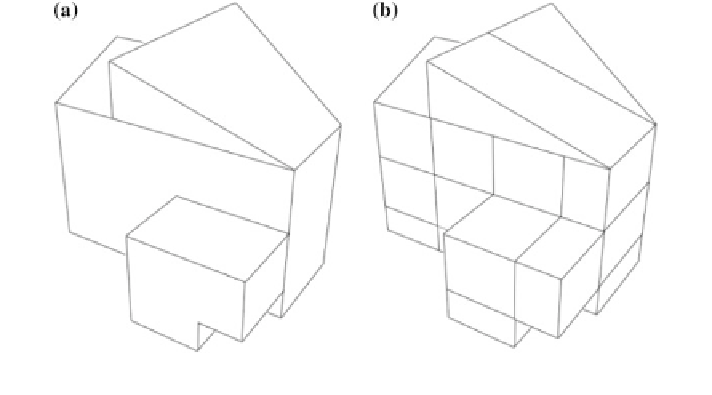Geoscience Reference
In-Depth Information
Fig. 8
The results of the segmentation process. a Original building. b Segmented model
4 Conclusions and Future Work
The popularity of 3D city models is evidently increasing. The rapid development
of computer hardware and software has allowed the generation of 3D models to be
done in various ways. A number of research works attempt to provide more
analytical capabilities that can enhance the usability of 3D city models as a reliable
3D decision making tool for urban planners, local authorities and building man-
agers. However, the lack of standardized guidelines for generating 3D city models
has often resulted in 3D models with undefined parts. The proposed method
described in this chapter should be able to breakdown complex building structure
into simpler segments based on its semantic and geometric values. The segmen-
tation technique will also enable users to define building parts and add specialized
semantic information on the building parts in post-modelling stage. The results
from the segmentation process can be used in other analyses such as change
detection and automatic updating.
For future work, the segmentation technique will be implemented in 3D change
detection module and visualized in 3D city model environment.
References
Agathos A, Pratikakis I, Perantonis S, Sapidis N, Azariadis P (2007) 3D Mesh segmentation
methodologies for cad applications. Comput Aided Des Appl 4(6): 827-841
Attene M, Falcidieno B, Spagnuolo M (2006) Hierarchical mesh segmentation based on fitting
primitives. Visual Comput 22(3):181-193
Cheng SC, Kuo CT, Wu DC (2010) A novel 3D mesh compression using mesh segmentation with
multiple principal plane analysis. Pattern Recogn 43(1):267-279

